Because of its clean, smokey taste and tremendous heat, lump charcoal is a favorite among BBQ fans. It is critical to differentiate it from coconut charcoal briquettes, which frequently include chemicals or binders. Hardwood lump charcoal is manufactured by carbonizing wood, resulting in uneven pieces that ignite fast and add an authentic, natural flavor to your grilled foods. It is the go-to choice for barbecue fans who wish to capture that trademark smokey taste due to its adaptability and clean burn. Remember that real hardwood lump charcoal, rather than charcoal briquettes, offers the greatest grilling experience.
At Vietnam Charcoal, we produce the highest-quality hardwood lump charcoal while keeping environmental sustainability in mind. We exclusively utilize wood waste from the timber industry as raw materials, which means that no new trees are chopped down for production. We source the best hardwoods, such as mahogany, acacia, tamarind, fruitwoods, and teak wood, that generate a high heat level with a long burning period. They contain high calorific contents of up to 4,000 calories and a lengthy burn period of up to 4 hours, making them ideal for heating and grilling.
From raw material selection to packing, we rigorously adhere to our manufacturing requirements to produce the highest quality hardwood lump charcoal with a high fixed carbon content of up to 80%, a minimum ash content of less than 2%, and a moisture content of less than 5%. When burned, these characteristics translate to a lengthy burning period, a high heat level, and no sparks or smoke. Furthermore, our hardwood lump charcoal has a naturally nice wood scent, which has a soothing effect, improves the flavor, and raises your barbecue experience.
The Secrets Behind Our World-Class Hardwood Lump Charcoal
So let’s get down to business. How do we produce one of the greatest hardwood lump charcoals on the market? What we’re going to share with you are tried-and-true procedures that have been refined over time to ensure that every piece of charcoal we create is of the finest quality. Here are the closely guarded steps:
Choosing Raw Materials for the Hardwood Lump Charcoal
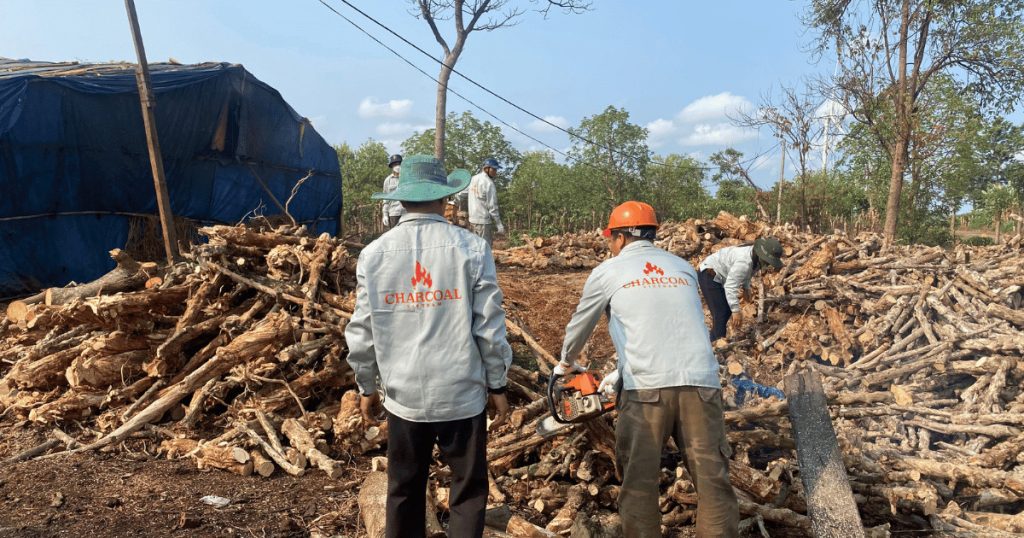
When it comes to generating high-quality lump charcoal, hardwoods are the best material. Selecting the proper hardwood is critical to making high-quality lump charcoal, and we’ve discovered that some hardwoods stand out as excellent alternatives. Coffee, eucalyptus, lychee, mangrove wood, and other hardwood trees are preferred for this purpose.
Because it creates a high heat level with a long burning time, we use mahogany wood waste, particularly the branches and twigs, as our raw material in our charcoal manufacturing. Furthermore, mahogany wood is more commonly available than other forms of hardwood, such as teak. Mahogany trees have a shorter harvest time than teak trees, which contributes to a more sustainable and effective production method. Acacia wood has achieved the top spot among our favored hardwoods because of its durability and outstanding burning qualities.
It is important to note that not all hardwood trees are appropriate for producing hardwood lump charcoal. Take, for example, rubber trees. Despite being classified as a hardwood, it contains a lot of sap with a high moisture content, which decreases the heat output, shortens the burning period, and creates sparks when burned. As a result, careful hardwood material selection is critical in producing the highest-quality lump charcoal.
Placing Hardwood Lumps into the Charcoal Kilns
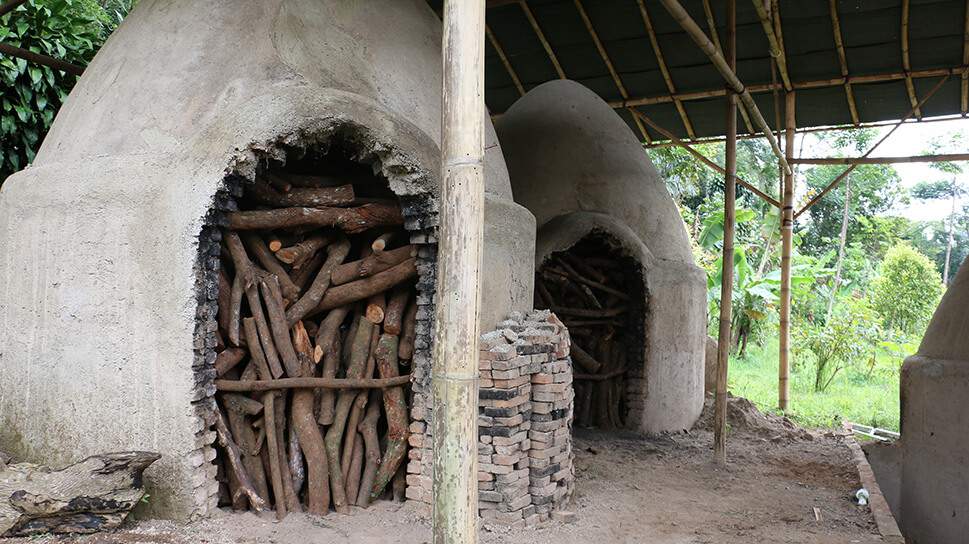
After prequalifying the raw materials, they are transferred to the dome-shaped kilns for carbonization. These kilns are particularly constructed and calibrated to maximize the carbonization of hardwood lumps. They are fueled by a mixture of wood twigs that are shuffled and burned as fuel within the kilns.
The arrangement of these woods within the charcoal kiln must be carefully considered. They should be arranged in a circle that is not too close to each other so that the hot steam produced by the combustion of the wood fuel may flow efficiently throughout the kiln, allowing for even carbonization.
If the hardwood arrangement is too tight, hot steam flows exclusively in specific locations of the kiln, leaving some parts of the hardwood lump uncarbonized. This partly carbonized charcoal appears black from the exterior but is woody brown on the inside.
Sealing the Charcoal Kilns
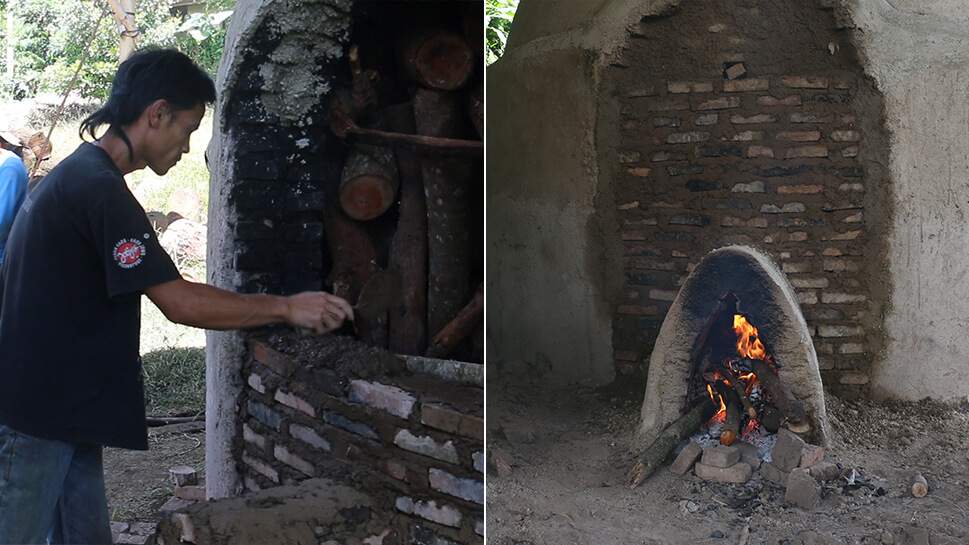
Once the hardwood waste has been appropriately placed, we begin building bricks to completely cover the kilns with sand and cement, leaving a hole in the front for burning the wood fuel and tiny openings on the sides to vent out any residue from the burning process.
To guarantee that the resultant charcoal includes a high percentage of fixed carbon and high calorific values, the kiln must be adequately sealed to block any wind and decrease the quantity of oxygen present in the carbonization process.
Burning the Hardwood Lumps
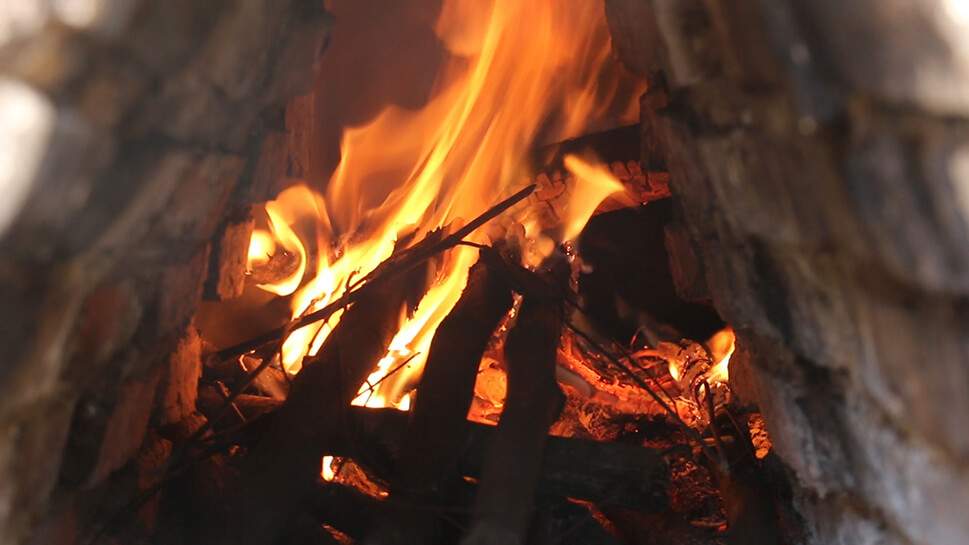
Once sealed, carbonization happens indirectly via the hot steam created by the wood fuel burning at 400°C for 5 days in a low-oxygen environment. The dome shape of the kiln aids in maintaining a steady temperature throughout the operation for effective carbonization.
As the hot steam progressively carbonizes the hardwood lumps, methane, hydrogen, and tar residues are produced and exhaust out the kilns’ side openings.
Cooling the Hardwood Lump Charcoal with the “Dry Method”
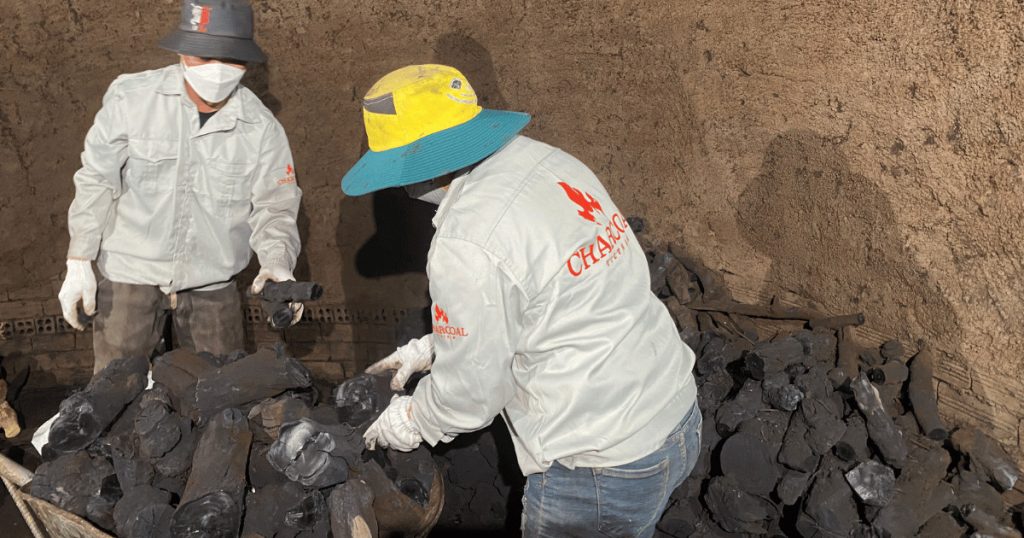
After 5 days, the fuel combustion is stopped so that the cooling process may commence. We use the “dry cooling method,” in which the charcoal is permitted to cool to room temperature on its own for 7-9 days without any external interference.
No leaks should be present throughout the cool-down process, either at the kiln door or from any other portions of the kiln. If there is a leak, oxygen will enter the kiln and instantly ignite the lump charcoal, causing it to burn entirely and convert to ashes.
Although the “dry cooling method” takes a long time to cool down, it has been shown to produce high-quality hardwood lump charcoal with low moisture content. To speed up the cooling process, some manufacturers spray or splash water into the lump of charcoal. However, the water will be absorbed by the charcoal, deteriorating its form and quality in the end. It will not be solid and will have a high water content, resulting in sparks when burned and a shorter burning period since the charcoal is not entirely burned when used for heating or grilling.
Removing the Hardwood Lump Charcoal from the Kiln
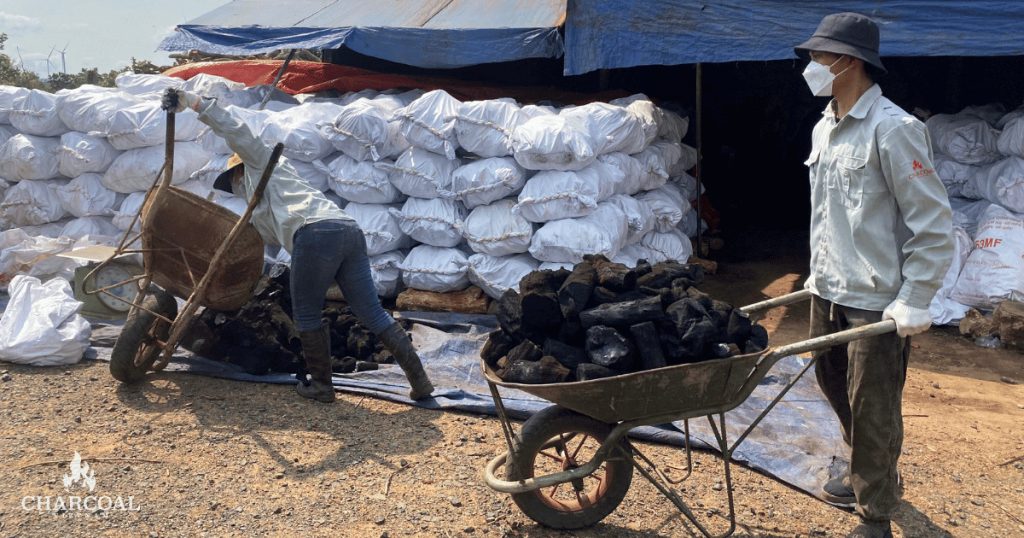
Before we open the charcoal kiln for harvesting, we must check that it has totally cooled to room temperature by feeling the outside of the kiln. This is to prevent the lump charcoal from being ignited by a rapid surge in oxygen from the environment, which might transform the charcoal into ashes.
Once the hardwood lump charcoal has cooled sufficiently, it will be taken from the charcoal kiln and trimmed in accordance with size classifications for each grade. Hardwood lump charcoal with Grade A has a homogeneous chunk shape with an export size of 5 cm (2.0″). Grade B comprises sticks with a diameter of 20 cm ( 7.9″) that are primarily used for domestic purposes and are occasionally exported based on client order requests. Finally, Grade C refers to tiny bits of varying sizes that are utilized as a raw material for hardwood charcoal briquettes.
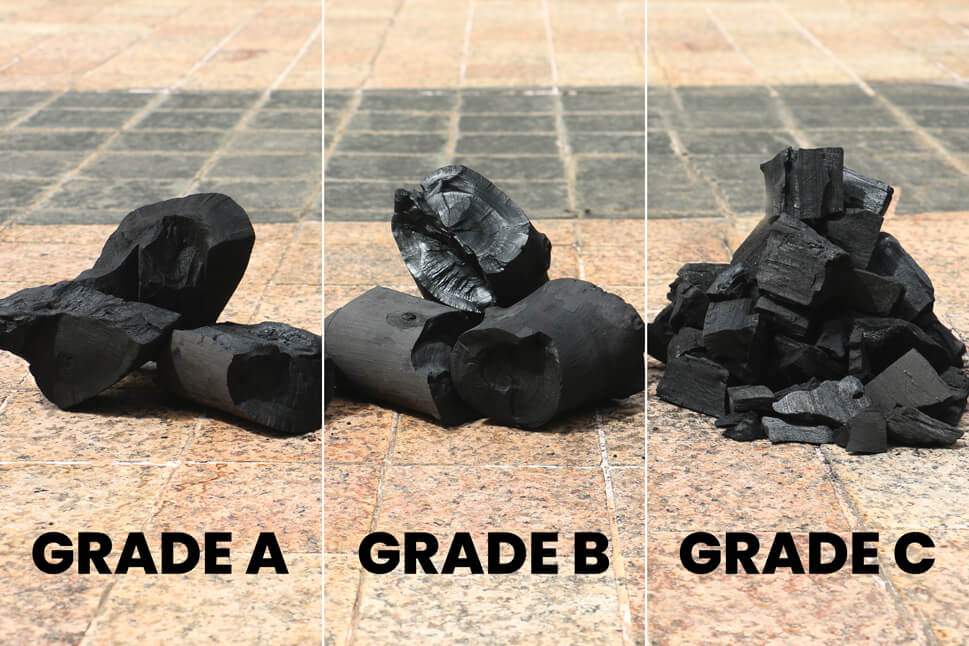
Packaging Process
When the hardwood lump charcoal is ready for packing, it is separated by wood type and quality and packed into polypropylene or brown kraft paper bags weighing around 10 kg -15 kg (22 lb – 33 lbs). Each bag contains hardwood lump charcoal of the same grade, size, and wood type to ensure the high consistency and quality of the completed items we give to our clients.
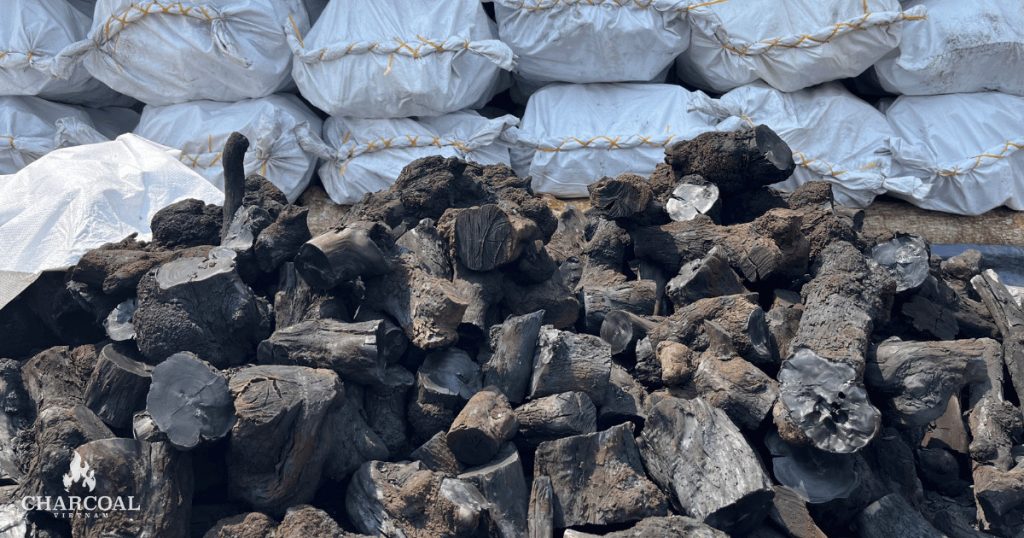
Vietnam Charcoal offers custom packaging demands that are tailored to your market’s specifications. We provide a wide range of packaging materials and custom labels that add value to your business. Here are some good packaging concepts from the best-reviewed hardwood lump charcoal for BBQ and cooking for your consideration while developing your own package.
If you want to produce the proper charcoal product on a large scale for your market and take your charcoal company to the next level, call us right now for a free consultation to learn how we can best assist you. We’ll work with you to create a plan that fulfills your objectives and strategy. From guiding you in selecting the best hardwoods for your lump charcoal to providing creative packing solutions and trustworthy delivery services, we are here to help you succeed. Begin immediately by enabling us to assist you in building your charcoal business into a profitable market leader.
For more information and inquiries, feel free to reach out to us at:
- Email: info@vietnamcharcoal.com
- Facebook: Vietnam Charcoal
- Instagram : vietnamcharcoal.official
- Whatsapp : (+84) 338 218 168 (Ms. Sarah)
I hope I get the chance to cooperate with you soon!
